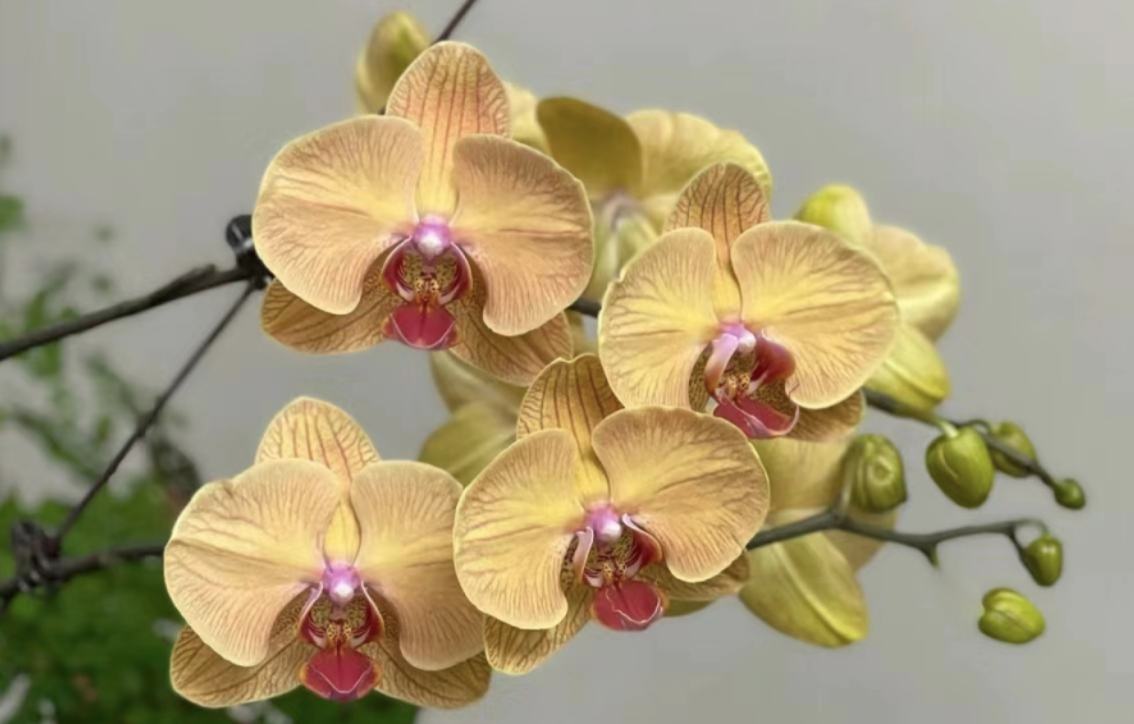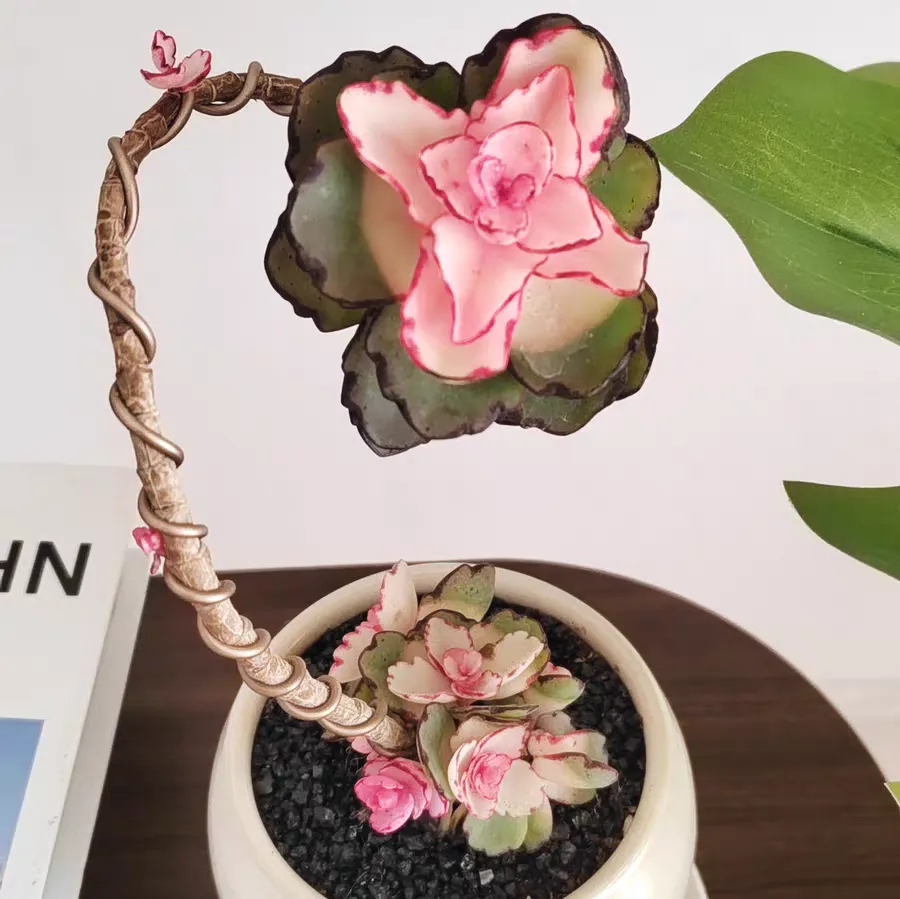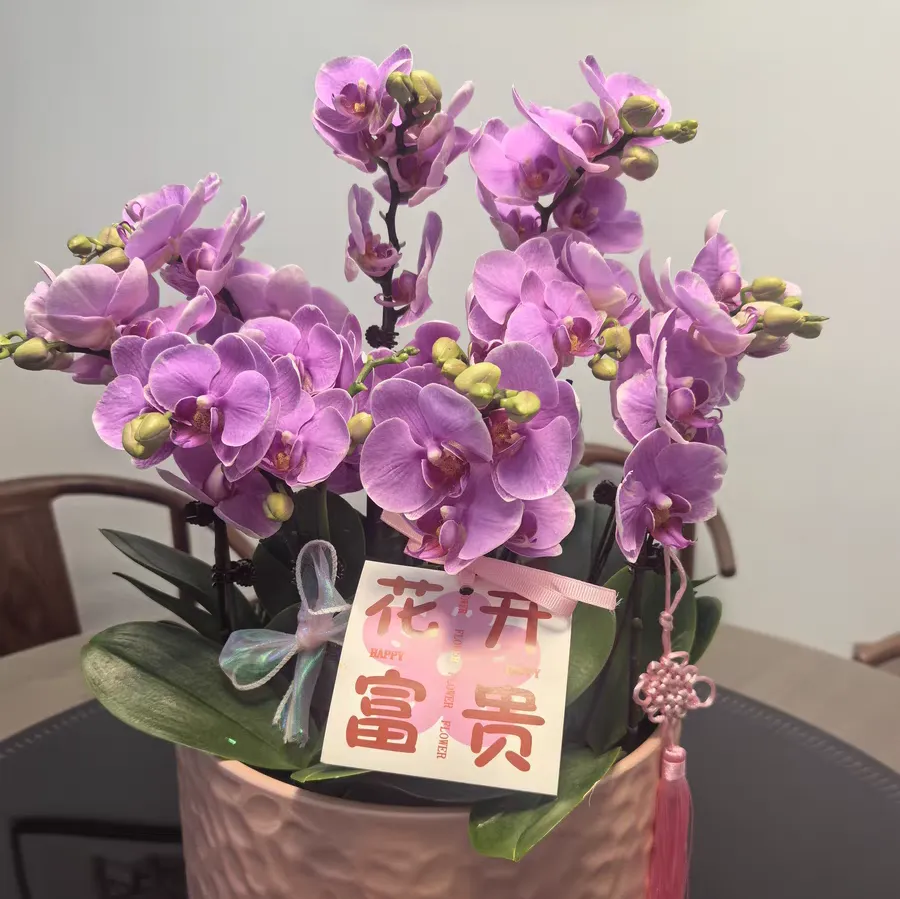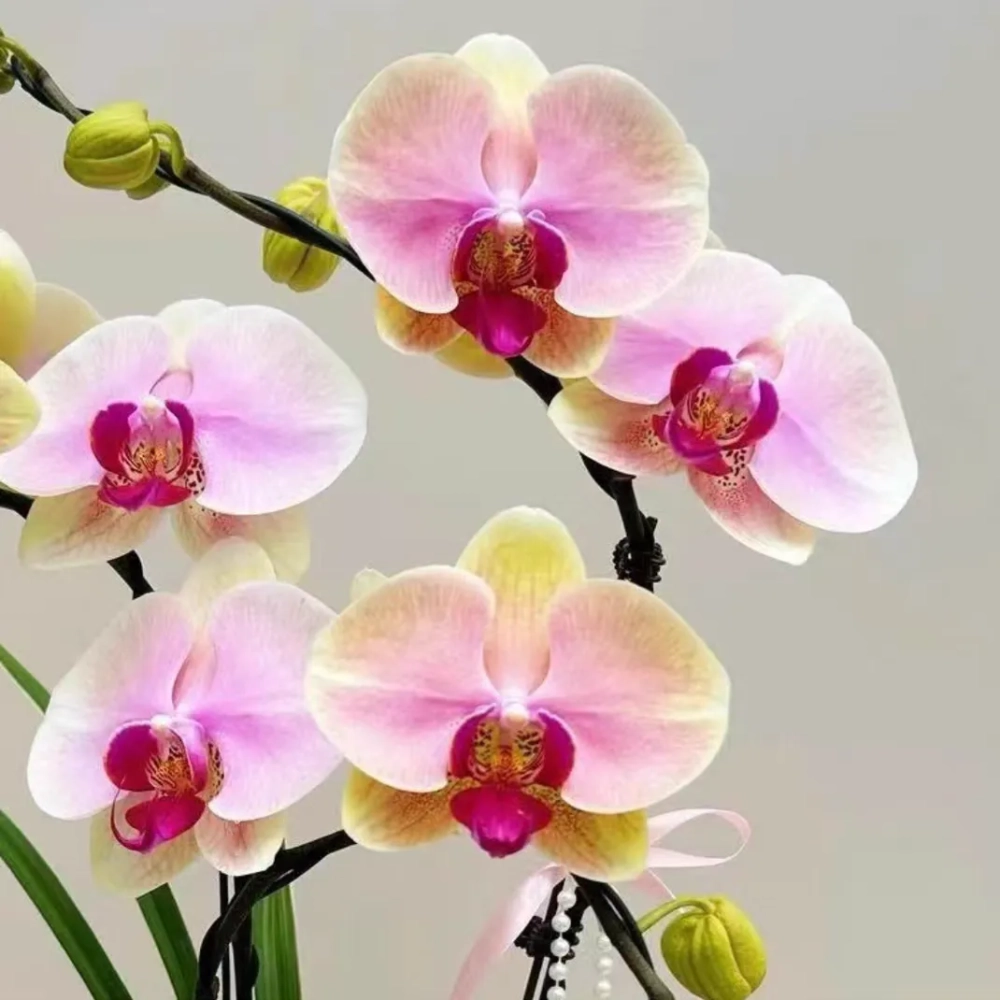There are always some flower colors that can remain fresh in your memory, or even be unforgettable for a long time. You will fall in love at first sight! That is the Xiaoe Tong variety of Phalaenopsis.
It is no exaggeration to say that the color of "Xiaoe Tong" after blooming is really hard to replicate. Its color is neither exactly yellow nor orange. When placed in the shade, the flower color becomes a little darker and reddish. When placed in bright sunlight, it is somewhat like cheese yellow. Coupled with the big tongue that is yellowish-orange and with whiskers, it is truly very pleasing to the eye. At the same time, some Xiaoe Tong varieties have darker root-like patterns on the petals, and some have lighter patterns on the petals. You will fall in love at first sight. In terms of flower shape measurement, the flower is about 8 centimeters in diameter after blooming. The height from the pot root to the first flower is about 26 centimeters, and the leaves are about 21 centimeters. The longer the flowers bloom, the yellower they will become. It is a variety that will surprise you when raised.
For friends who have raised Phalaenopsis, surely they have all experienced accidentally breaking the flower stalk when moving the potted plant in daily life. In such cases, there is no need to worry too much. If it is only slightly cracked and the branches are not completely separated, you can wrap the broken part with a tissue and then fix it with a small clip. With this operation, the flower will still bloom normally. However, in daily life, attention should still be paid to avoiding the breaking of the flower stalk of Phalaenopsis.
So, what are the suggestions for the daily maintenance of Phalaenopsis? First of all, when moving or adjusting the position of Phalaenopsis, be as gentle as possible to avoid irreversible breaking of the flower stalk. Secondly, keep the indoor humidity between 50% and 80%. Do not place it in strong wind and harsh sunlight to prevent sudden temperature changes. It needs to be kept warm in winter and properly ventilated and cooled in summer. Then, follow the principle of "rather dry than wet" when watering daily.
After watering, promptly pour out the water at the bottom of the pot to avoid soaking the roots. In terms of fertilization, regularly use fertilizers rich in phosphorus and potassium to enhance the toughness of the flower stalk. Finally, pests of Phalaenopsis include thrips, scale insects, red spiders, etc. The way to avoid them is to regularly check the petals of the plant. Once discovered, timely measures should be taken for treatment to protect the health of the flower stalk.
Is Xiaoe Tong Phalaenopsis easy to raise?

Share with
Tagged in :




Leave a Reply